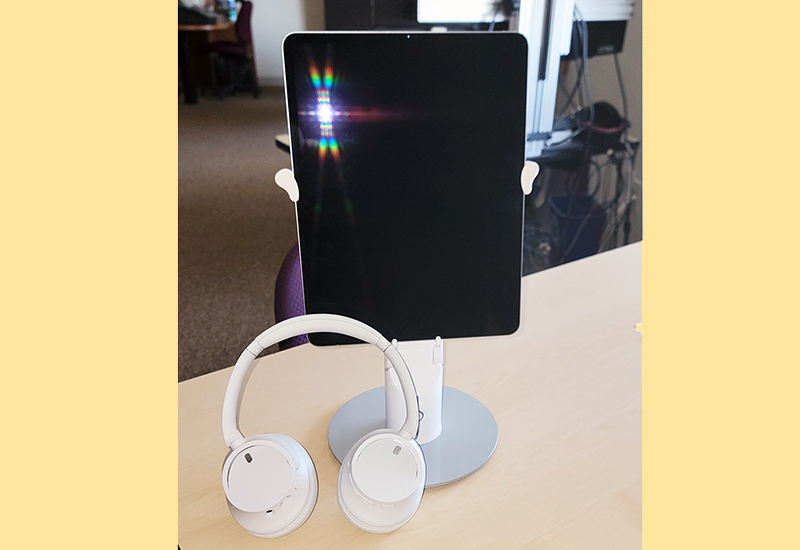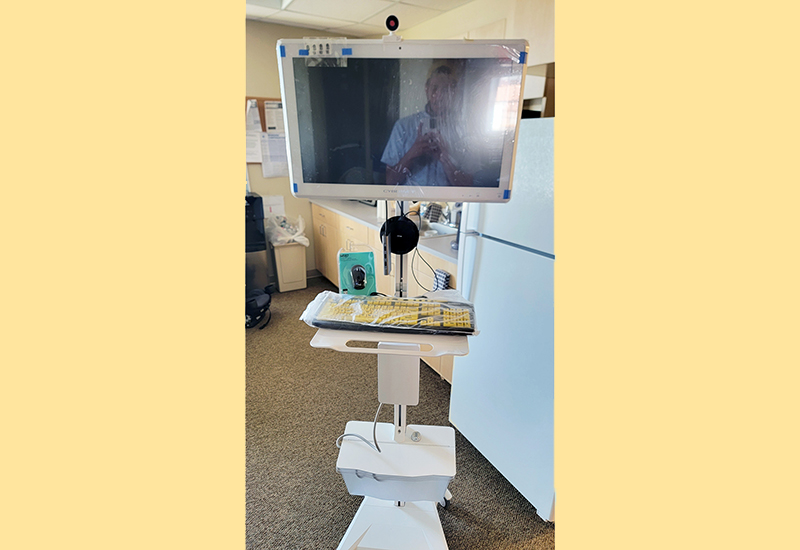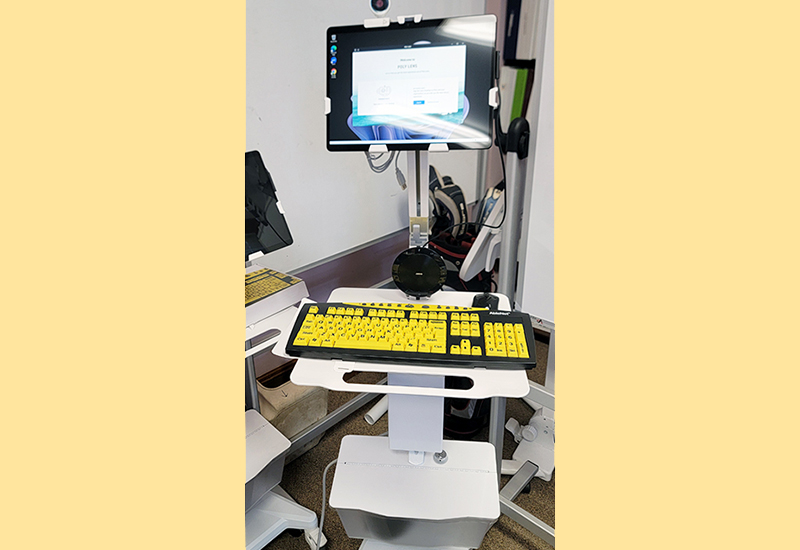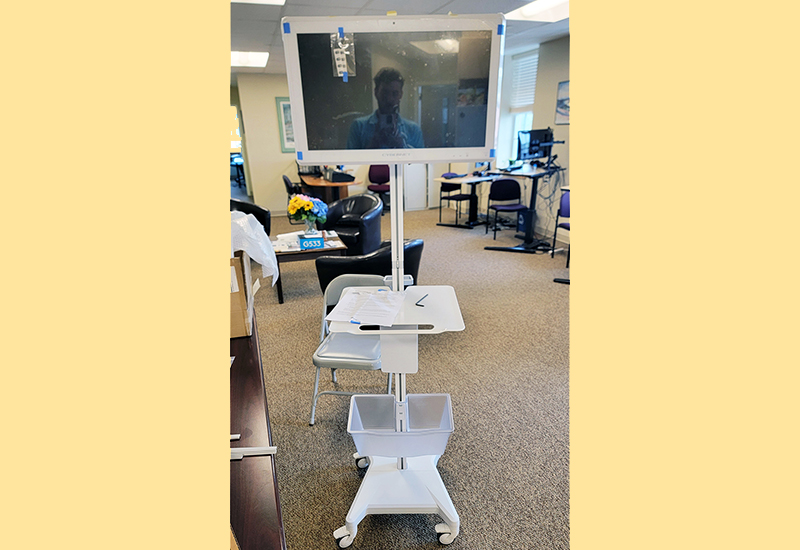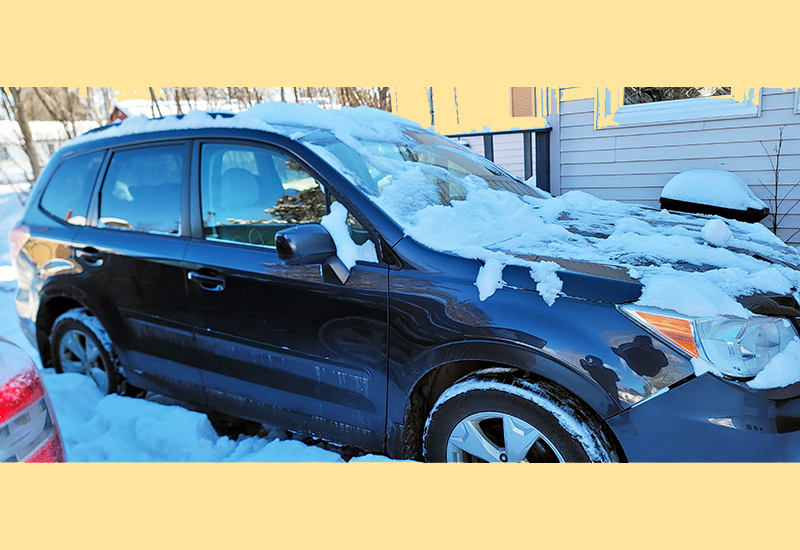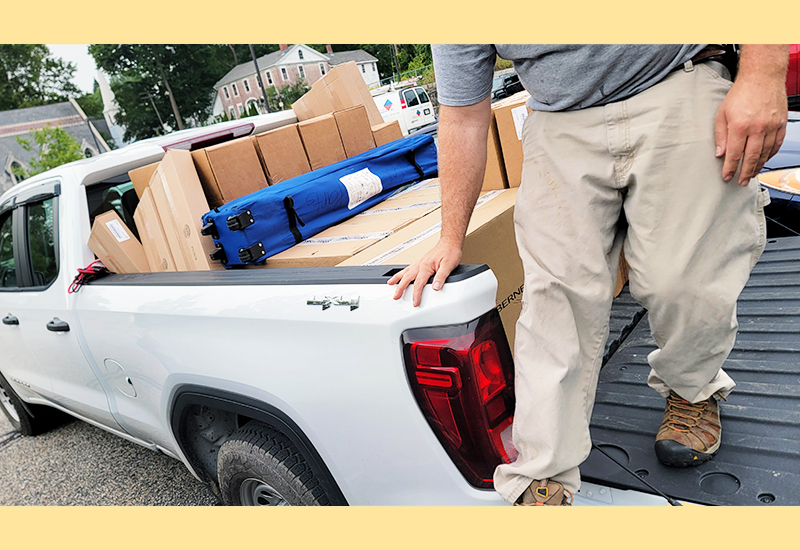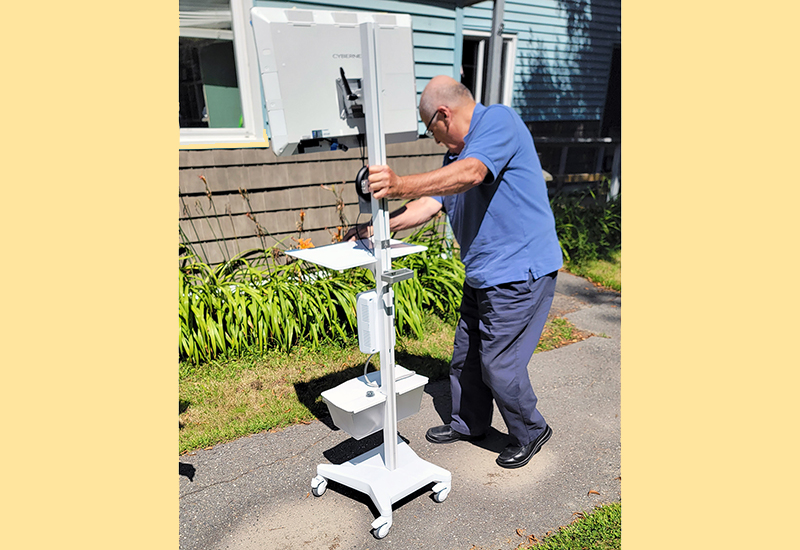Delivering Telehealth Technology to Increase Access to Care in Maine
May 30, 2024
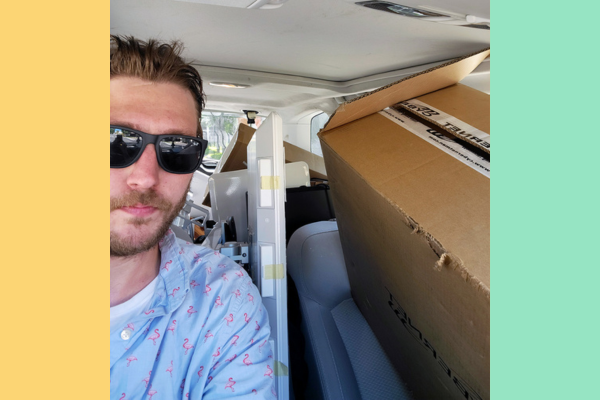
Reid Plimpton takes a selfie in his car that is packed with three telehealth carts that he delivered to Maine PNMIs in summer 2023.
Coffee in hand, Reid Plimpton double checks the telehealth equipment packed nearly to the brim in his Subaru Forester before taking off. Satisfied, he gets in the driver’s seat and decides whether to listen to one of his favorite podcasts or the latest on NPR for entertainment during the drive. This day, he drives nearly five hours from his home in Farmington, Maine, to Presque Isle, Maine, and then an additional hour to Madawaska, Maine, which is the most northeastern town in the U.S. and touches the Canadian border.
Reid is MCD Global Health’s Technology and Digital Health Initiatives program manager, and his more than 10-hour drive was an important one; it meant that three private non-medical institutions (PNMI) located in those two rural towns received the equipment necessary for their residents to meet with health care providers remotely, increasing access to care and improving health equity.
“It was a great experience; I’m not sure I would have ever ended up in Madawaska otherwise,” Reid reflected. “I might feel differently if I was on the highway the whole time in the city, but instead, you get these beautiful views of Maine.”
His work is part of a project funded through the Office of MaineCare Services, Maine Department of Health and Human Services, with funding from Section 9817 of the American Rescue Plan to improve and expand home and community-based services. The goal of this project is to increase access to health care services for residents living in PNMIs through telehealth technologies.
A PNMI is a type of residential care facility that receives reimbursement from MaineCare, Maine’s Medicaid program, for providing community support and services for residents enrolled in MaineCare.
Of the more than 575 PNMIs in Maine, MCD plans to work with 130, and more than 100 have also expressed interest in participating in this initiative. Since October 2022, MCD has worked with dozens of these PNMIs located across Maine to determine how telehealth services might benefit their residents and which telehealth design works best for their specific site. Once the decision is made to move forward, Reid and his team order and then assemble the equipment, about a 45-minute process, and develop specific user guides and other materials to help onboard PNMI staff and residents.
Finally, after months of planning, Reid delivers the new equipment to the PNMIs. “There's a lot of excitement when you bring the technology to the sites,” he said. He spends about an hour and a half doing setup and providing the staff and residents with training to make sure they understand how to use the telehealth equipment.
Of the intended 130 pilot PNMIs in Maine, 78 sites have already agreed to participate and have gone through the process of figuring out the logistics and potential device designs. Of those, 50 have received their equipment and more than 25 are already using it for telehealth visits. Reid expects an additional 52 sites will be operational this year and is excited to “put a lot of miles on the car” for such work.
Each facility can choose between six different telehealth designs: four different movable cart designs, a dedicated wall-mount design, and small tablet design that can be easily transported from space to space within the facility for telehealth visits.
Each design differs based on the needs of the facility, such as having a worktable attached to the cart, Bluetooth headphones for private conversations with patients, an adjustable arm to adjust the screen, and more.

“Staff within these facilities have made it clear that this is the first time that they have had the opportunity to get funding and technical assistance like this to add or expand telehealth services,” Reid said. “They're now telehealth access points, and through this process of helping these sites decide what the best fit is in terms of technology and their residents’ needs, it’s really helped us understand some of the nuances of health care within the PNMI environment.”
For example, leveraging technology can not only help bring primary, specialty, and mental health services to residents when and where they need them, it simultaneously decreases the need to put both residents and staff on the road, which, in turn, helps prevent risks and expenses associated with travel and alleviates staffing capacity issues.
When COVID-19 began, use of telehealth greatly increased and became the preferred visit type to meet patients in a safe environment. Since then, more benefits of digital health care have surfaced, and perhaps the most noticeable benefit is it allows patients to meet with health care providers in a more timely and efficient manner.
In Maine, many people live in rural towns or on islands with providers located few and far between. In the past, patients sometimes had to wait months, or even a year, to see a provider or specialist and then travel for hours to the site, be it by car or ferry. Telehealth technologies help ease such hassles for both patients and providers, creating timelier and better patient-centered care.
For residents of small to medium PNMIs who may rely on staff support for transportation to appointments, onsite telehealth services can be a game changer.
There was a total of 42,390 health care practitioners in Maine’s workforce in 2019, according to the U.S. Bureau of Labor Statistics; however, in 2022, that number decreased to 41,110. At the same time, Maine’s population increased by 2.4% from April 2020 to July 2023, according to the U.S. Census Bureau, which plays a role in an increased need for health care. The present reality in accessing care is a grim one; however, the use of telehealth provides some relief to both patients and health care workers.
“Because we're starting with the broadest sense of telehealth here, work from this project can be extracted to a number of different settings that MCD already works in with the same thought process,” Reid said. “On the other side, we can take lessons learned from this and apply those to some of our more complex digital health projects and look at the next level of integration and the expansion of care, as well, which is really cool.”
Learn more about MCD’s work in digital health and technology


